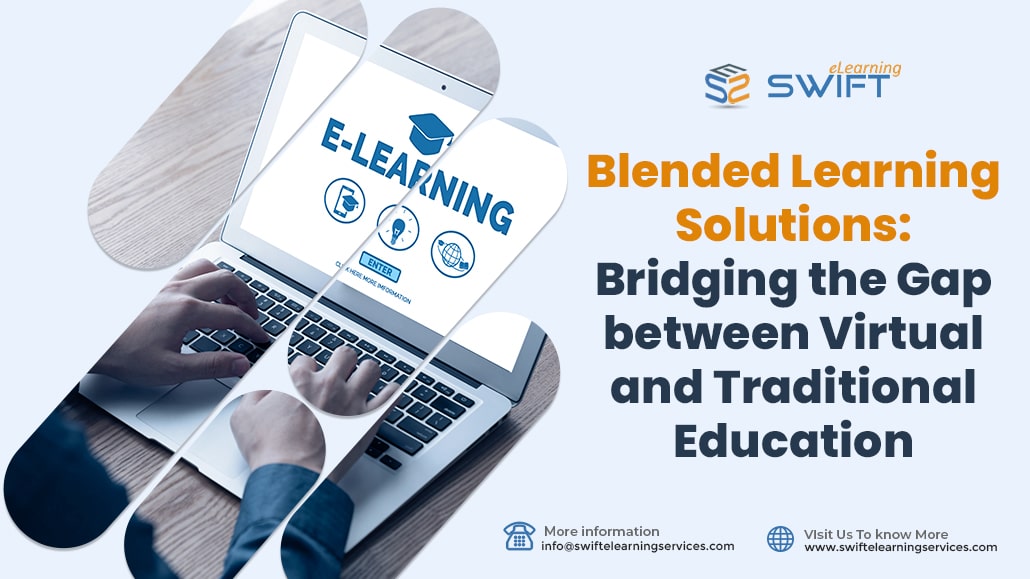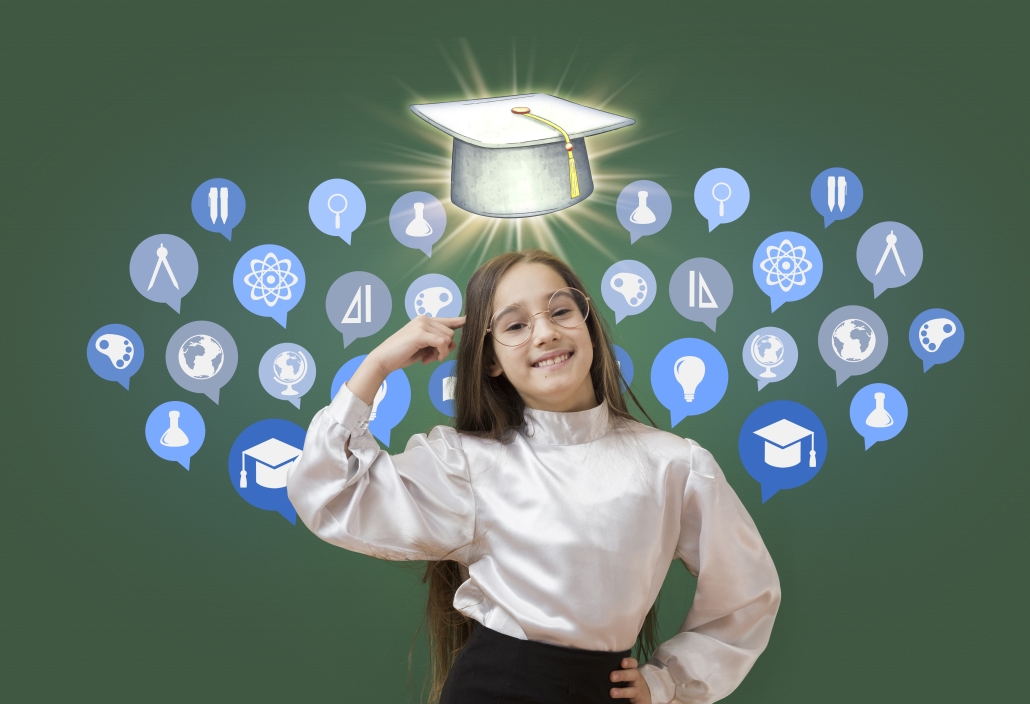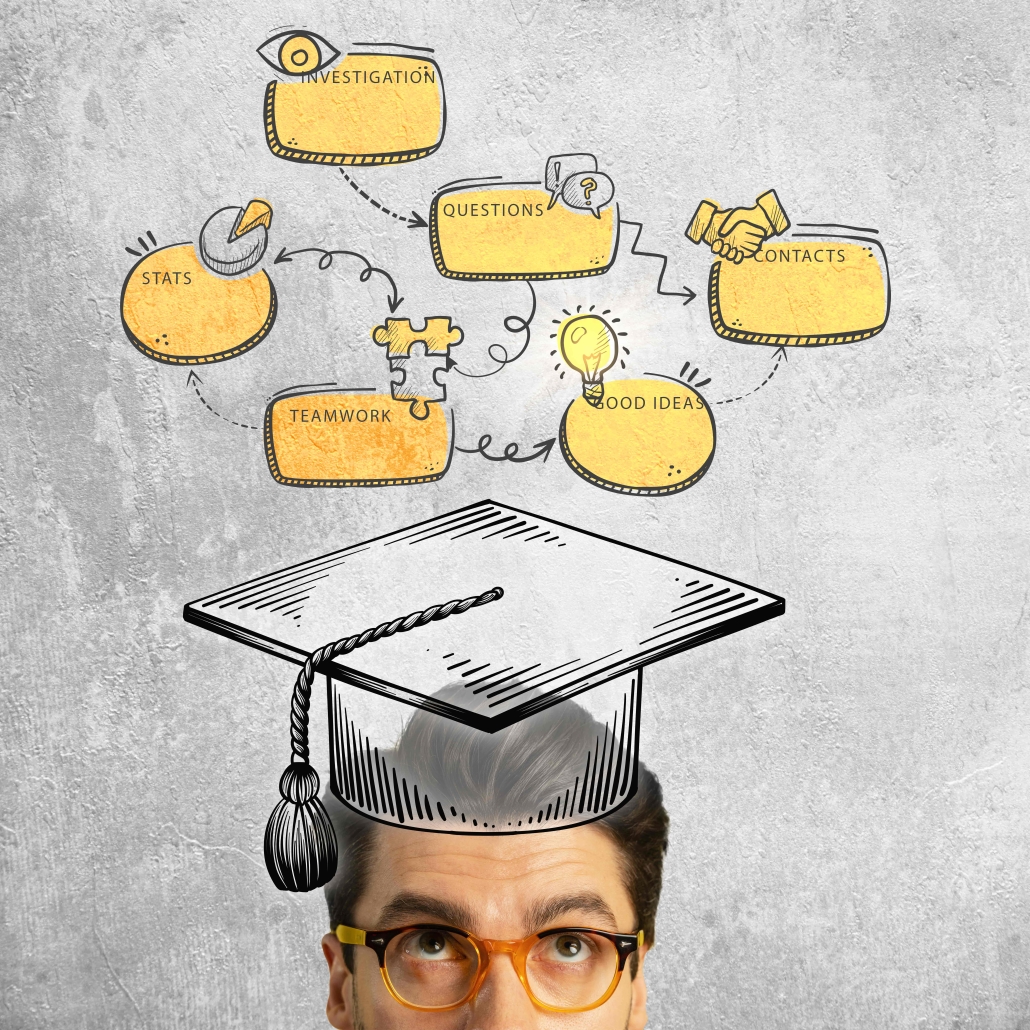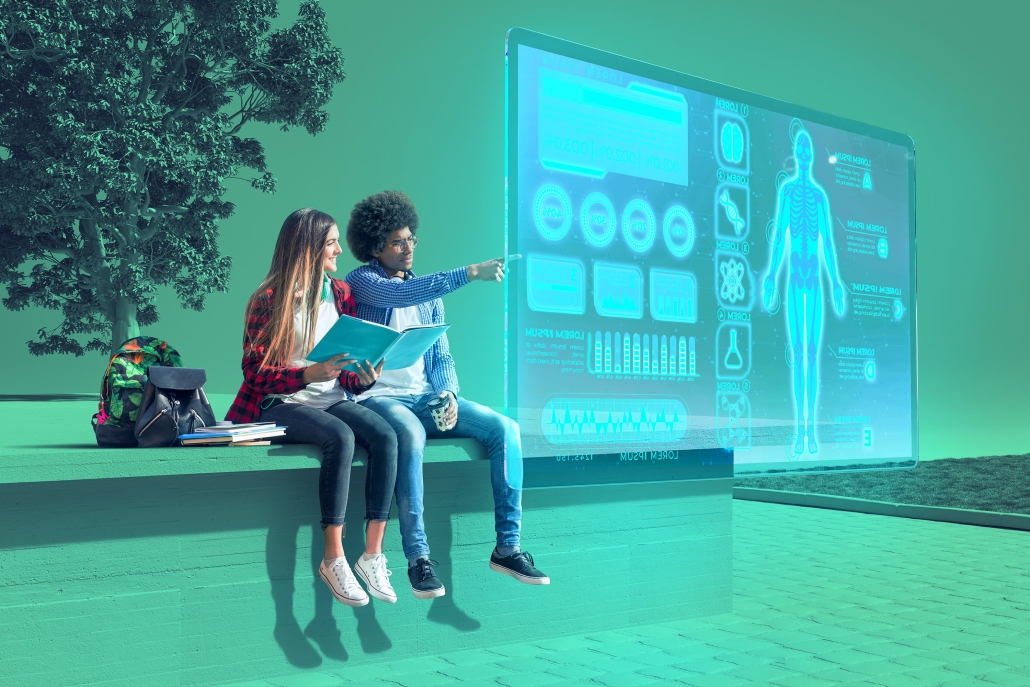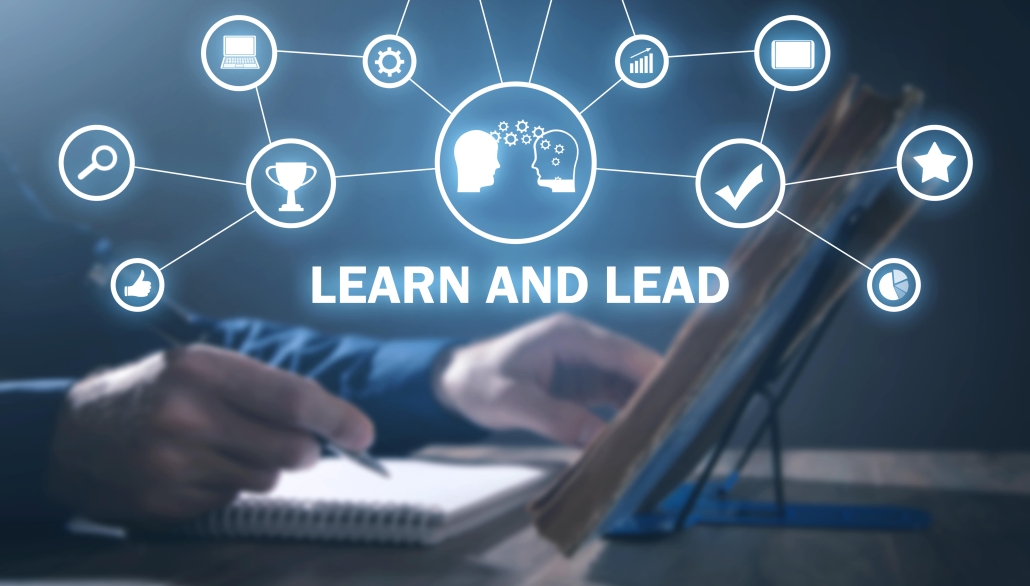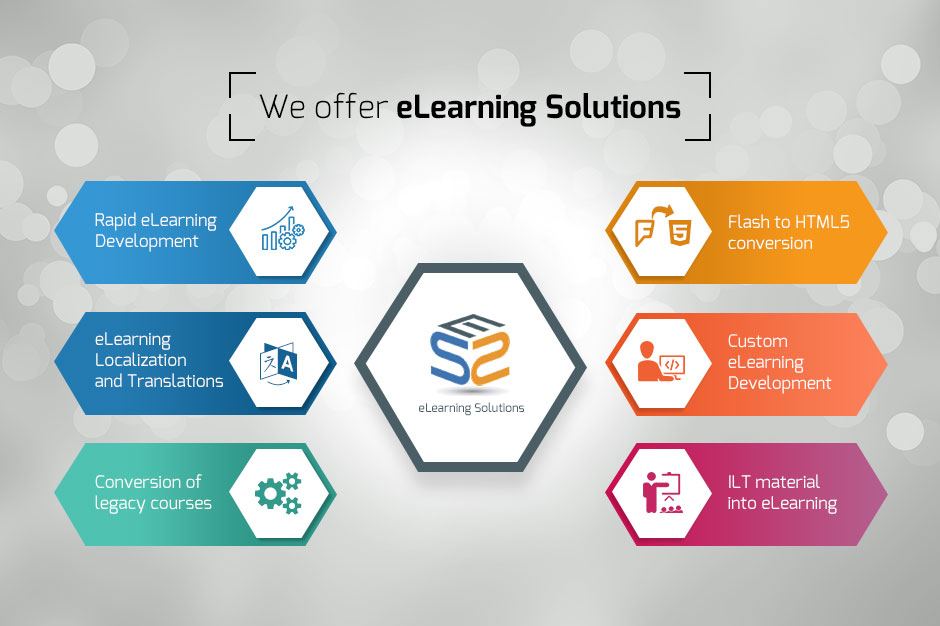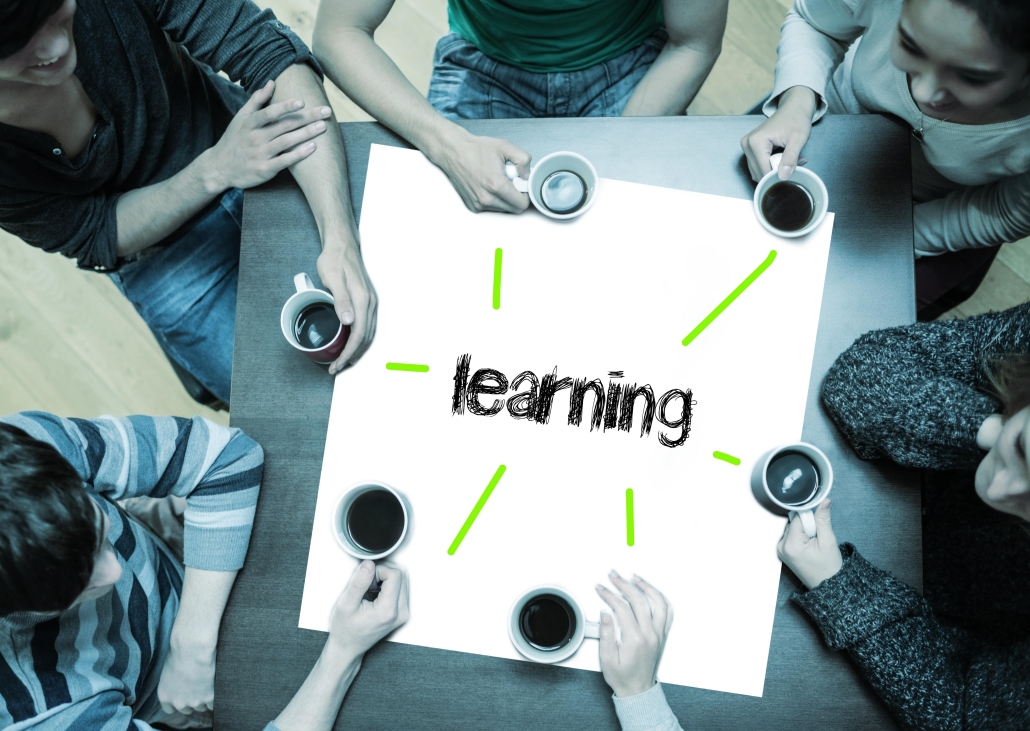Blended Learning Solutions: Bridging the Gap between Virtual and Traditional Education
Explore how blended learning solutions are revolutionizing education by combining the best aspects of virtual and traditional learning methods. Learn about the benefits, challenges, and how these solutions are shaping the future of education.
In the ever-evolving landscape of education, technology has played a significant role in shaping how we learn.
Blended learning solutions is a revolutionary approach that seeks to harmonize the advantages of virtual learning with the tried and tested methods of traditional education. By seamlessly integrating both modalities, blended learning solutions offer students a comprehensive and enriching learning experience.
This article aims to delve deep into the concept of blended learning solutions, its benefits, implementation strategies, and it’s potential to revolutionize education.
1. What is Blended Learning?
Blended learning solutions is an innovative pedagogical approach that combines face-to-face classroom learning with online learning. It incorporates the best aspects of both virtual and traditional education, promoting a student-centered learning environment. This approach embraces a diverse range of learning activities, such as in-person lectures, online discussions, virtual simulations, and interactive multimedia content. The integration of technology enhances engagement, flexibility, and personalization, catering to individual learning styles.
2. The Advantages of Blended Learning Solutions
Blended learning solutions offer numerous advantages, which are as follows:
2.1 Personalized Learning
Blended learning allows students to progress at their own pace, providing personalized learning experiences tailored to their strengths and weaknesses.
2.2 Flexibility
Students can access course materials and engage in learning activities online, offering flexibility in managing their study schedules.
2.3 Enhanced Engagement
Incorporating multimedia content and interactive elements captivates students, promoting higher engagement and knowledge retention.
2.4 Improved Accessibility
Blended learning accommodates diverse learners, including those with physical disabilities or geographical constraints.
2.5 Data-Driven Insights
With the integration of technology, educators can gather valuable data on student performance and adapt instruction accordingly.
2.6 Cost-Effectiveness
Blending virtual and traditional methods can lead to cost savings in terms of infrastructure and resources.
2.7 Preparation for the Digital World
Blended Learning equips students with essential digital skills necessary for the 21st century.
2.8 Effective Knowledge Retention
Blended Learning leverages a mix of instructional methods, leading to better retention and application of knowledge.
2.9 Immediate Feedback and Assessment
Online assessments and quizzes provide instant feedback to learners, enabling them to identify areas for improvement.
2.10 Time Savings
Blended Learning optimizes learning time, as learners can progress through material at their pace and focus on areas that require more attention.
2.11 Collaborative Learning Opportunities
Online discussions and group projects foster collaboration and teamwork among learners.
2.12 Continuous Access to Resources
Learners can revisit online materials and resources even after the course completion, facilitating continuous learning.
2.13 Improved Learning Outcomes
The combination of face-to-face interaction and online tools enhances learning outcomes and academic performance.
2.14 Higher Course Completion Rates
Blended Learning offers greater flexibility, resulting in higher course completion rates compared to traditional classroom-only settings.
2.15 Customized Learning Paths
Learners can choose their learning paths, explore topics of interest, and skip areas they already mastered, fostering a personalized learning journey.
Blended learning solutions present a wide array of benefits that empower learners, educators, and institutions to embrace modern technology while retaining the essence of traditional education. By leveraging the advantages of both worlds, blended learning opens up new opportunities for meaningful and effective learning experiences.
3. Implementing Blended Learning Solutions
Creating an effective blended learning environment requires careful planning and execution. Here are essential steps for successful implementation:
3.1 Assessing Technological Infrastructure
Evaluate the existing technological resources to ensure they can support online learning platforms and tools.
3.2 Curating Content
Develop or curate high-quality digital content that aligns with the learning objectives and complements in-class activities.
3.3 Training Faculty
Provide comprehensive training to educators to effectively utilize technology and facilitate a blended learning environment.
3.4 Defining Learning Objectives
Clearly outline the learning outcomes and goals, ensuring they align with the overall curriculum.
3.5 Engaging Students
Foster a sense of community and engagement by encouraging active participation and collaboration among students.
3.6 Monitoring Progress
Regularly assess student progress and gather feedback to identify areas for improvement and personalized support.
3.7 Continuous Improvement
Continuously adapt and refine the blended learning approach based on data-driven insights and student feedback.
4. Blended Learning Best Practices
To make the most of blended learning solutions, consider implementing these best practices:
4.1 Balancing Virtual and In-Person Interaction
Strike a balance between online and in-person interactions to maintain social connections and promote collaborative learning.
4.2 Utilizing Interactive Technologies
Incorporate interactive technologies like gamification and virtual reality to make learning engaging and enjoyable.
4.3 Encouraging Self-Directed Learning
Empower students to take ownership of their learning journey by providing opportunities for self-directed learning.
4.4 Building a Supportive Learning Community
Cultivate a positive and supportive learning environment where students feel comfortable asking questions and seeking help.
4.5 Providing Timely Feedback
Offer timely feedback on assignments and assessments to aid student progress and address any misconceptions.
4.6 Creating Assessments that Reflect Learning Outcomes
Design assessments that align with the learning objectives and measure the effectiveness of the blended approach.
4.7 Evaluating and Adapting
Regularly evaluate the effectiveness of Blended Learning Solutions and be open to making necessary adjustments for continuous improvement.
Are you looking for innovative ways to revolutionize education and enhance the learning experience for your students?
Look no further! At Swift eLearning Services, we are proud to offer blended learning solutions that combines the best of both learning modalities.
5. Our Tailored Approach to Blended Learning
At Swift eLearning Services, we understand that every educational institution has its unique requirements and goals. That’s why our Blended Learning Solutions are entirely customizable to suit your specific needs. Our team of experienced instructional designers and educators works closely with you to develop a blended learning curriculum that seamlessly integrates with your existing educational framework.
We take a learner-centric approach, ensuring that your students remain at the heart of the learning process. By incorporating interactive multimedia content, virtual simulations, and collaborative activities, we create an engaging and immersive learning experience that encourages active participation and critical thinking.
6. The Swift eLearning Advantage
Choosing Swift eLearning Services as your partner in implementing Blended Learning Solutions comes with several advantages:
6.1 Expertise and Experience
With years of experience in the education industry, we have a deep understanding of the best practices in blended learning. Our team of experts brings a wealth of knowledge to create effective and impactful learning experiences.
6.2 Cutting-Edge Technology
We leverage the latest educational technologies and tools to deliver seamless Blended Learning Solutions. Our platform is user-friendly, ensuring that both educators and learners can navigate it with ease.
6.3 Continuous Support
Our commitment to your success extends beyond the initial implementation. We provide ongoing support, training, and updates to ensure that your Blended Learning Solution remains optimized and effective.
6.4 Measurable Outcomes
At Swift eLearning Services, we believe in the power of data to drive continuous improvement. We help you track and measure the effectiveness of your Blended Learning Solution, making data-backed decisions for better outcomes.
7. Join the Blended Learning Revolution!
Don’t miss out on the opportunity to transform education and empower your students with the best learning experience. Embrace the future of education with our Blended Learning Solutions: Bridging the Gap between Virtual and Traditional Education. Contact Swift eLearning Services today to embark on a journey towards innovative and effective learning for all.
8. Conclusion – Blended Learning Solutions: Bridging the Gap between Virtual and Traditional Education
Blended learning solutions presents a promising approach to modernize and enhance education. By thoughtfully combining the advantages of virtual and traditional learning, Blended Learning provides a student-centric, flexible, and engaging learning experience. Its implementation can positively impact student performance, preparing them for a digital world while accommodating diverse learning needs.
As technology continues to advance, embracing Blended Learning Solutions can truly revolutionize education and bridge the gap between virtual and traditional learning methods.
Our E-learning Solutions
Rapid Development Solutions
We leverage cutting-edge authoring tools, e-learning templates, and streamlined workflow processes to rapidly and efficiently deliver high-quality e-learning content, ensuring that training objectives are met with speed and precision.
Convert Flash Course to HTML5
We specialize in seamlessly converting Adobe Flash courses into HTML5-standard courses to ensure that the content remains accessible and functional across modern web browsers and devices.
E-learning Content Localization
We specialize in adapting e-learning training materials, including courses, modules, and assessments, to accommodate the linguistic, cultural, and regional preferences of specific target audiences.
Faq’s About Blended Learning Solutions
Q: What is the Difference between Blended Learning and Hybrid Learning?
A: Blended Learning and Hybrid Learning are often used interchangeably, but there is a subtle difference. Blended Learning combines both virtual and in-person instruction, while Hybrid Learning typically involves a mix of online and face-to-face classes but might not integrate the two modes within individual lessons.
Q: How Does Blended Learning Impact Student Performance?
A: Research suggests that Blended Learning positively affects student performance, as it allows for personalized learning experiences, increased engagement, and access to a wealth of online resources.
Q: Are There Any Age Restrictions for Blended Learning?
A: Blended Learning is suitable for learners of all ages, from young students in elementary schools to adult learners in higher education and professional settings.
Q: Can Blended Learning Be Implemented in K-12 Education?
A: Yes, Blended Learning is increasingly being adopted in K-12 schools, offering students a more interactive and personalized learning experience.
Q: Is Blended Learning More Expensive to Implement Than Traditional Education?
A: While there may be initial costs associated with technology and training, Blended Learning can lead to long-term cost savings by optimizing resources and improving learning outcomes.
Q: What Role Does Technology Play in Blended Learning?
A: Technology serves as the backbone of Blended Learning, facilitating online communication, content delivery, assessments, and data analysis.
Q: What is Traditional Education?
A: Traditional Education involves in-person classroom instruction conducted by a teacher or instructor.
Q: What is Virtual Education?
A: Virtual Education relies on digital platforms, such as online courses, facilitated through the internet.

